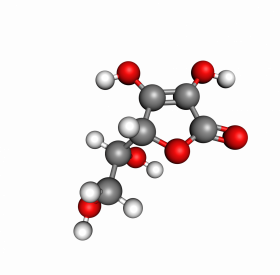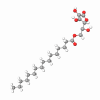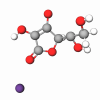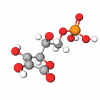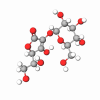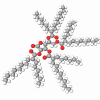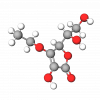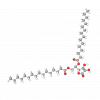Vitamin C, also known as L-Ascorbic acid, plays a crucial role in human skin. It performs a large number of duties to ensure the radiance, firmness, and youthful look of the skin.
First of all, it is an efficient antioxidant, which scavenges and neutralizes free radicals formed in dermal tissue due to UV irradiation of the sun. These free radicals have a detrimental effect on skin cells as they initiate cell DNA change destroy collagen, elastin, and other constituents of skin layers. It is one of the most effective fighters against these harmful particles. It prevents skin photo-aging, wrinkling, and loss of elasticity.
The second important role is the activation of collagen synthesis. It increases the quantity of collagen in dermal tissue leading to a firm and plump appearance of skin.
The third function is the combat against hyperpigmentation. It interrupts one of the steps of melanin production. As a result, the number and intensity of dark patches considerably decline.The beneficial qualities of L-Ascorbic Acid are not limited to the ones mentioned above. It also demonstrates anti-inflammatory, wound, and scar healing properties that decrease erythema (redness of the skin) and allergic reactions.
Vitamin C is a trustworthy ally of skin health. Topical supplementation will enormously benefit its appearance by slowing down aging, lessening wrinkles, and making the dermal surface monochrome.
Ingredients
How does L-Ascorbic acid fight against dark spots?
The wrinkles aren't the only sign of aging skin, however dark spots and pigmentation caused by exposure to the sun, stress, acne, or hormones interrupt the uniformity of the skin, making it look older.
The sun can do horrible things to our skin, and we need to be vigilant in our protective measures such as wearing sunscreen, a hat, and sunglasses. But what do you do when it's too late for prevention, and you already have sun-damaged skin?
Well, you're in luck – it turns out that Ascorbic acid has been proven to fade skin pigmentation caused by UV rays. That's where the boom about Vitamin C in skincare started. It works by inhibiting the enzyme tyrosinase, helping to prevent melanin production and breaking down the built-up patches of melanin. Research has also found that Vitamin C seems to target the area of pigmentation and leave the rest alone, so you won't end up looking pale all over!
However, while using products to treat pigmentation, be sure to increase your defense against the sun by always wearing sunscreen! Although melanin causes unsightly spots, it's also what protects your skin from sun damage, and those spots were a warning sign from your skin that you are not protecting yourself effectively.How does Vitamin C boost collagen production?
Ascorbic Acid (vitamin C) is an essential co-factor in the hydroxylation of proline and lysine to form hydroxyproline and hydroxylysine amino acids, which are necessary for the formation and function of collagen.
Although the body's reservoir of vitamin C is about 1,500 mg and normal daily intake can maintain a saturated level, many factors potentially contribute to low ascorbic acid levels. These include age, smoking, infection, and drug intake. In addition, skin is especially sensitive when vitamin C levels are low, which could result in diminished collagen synthesis, even without overt manifestation of ascorbate deficiency.
Studies have confirmed the need to deliver vitamin C directly to the dermis to alter local deficiencies. The most important attributes of topical delivery are:
- Preferential stimulation of collagen synthesis
- Potential reversal of thinning epidermis
- Significant long-term protection against UV radiation with continuous application
- Skin lightening and prevention of age spots
What forms of Vitamin C are used in skincare formulas?
Unfortunately, L-Ascorbic acid is not stable and quickly breaks down due to sunlight, air, temperature, and other factors. So, manufacturers are trying to use other forms to enhance the shelf-life of skincare products.
Several different forms of Vitamin C vary in effectiveness and stability. The most stable forms are:
